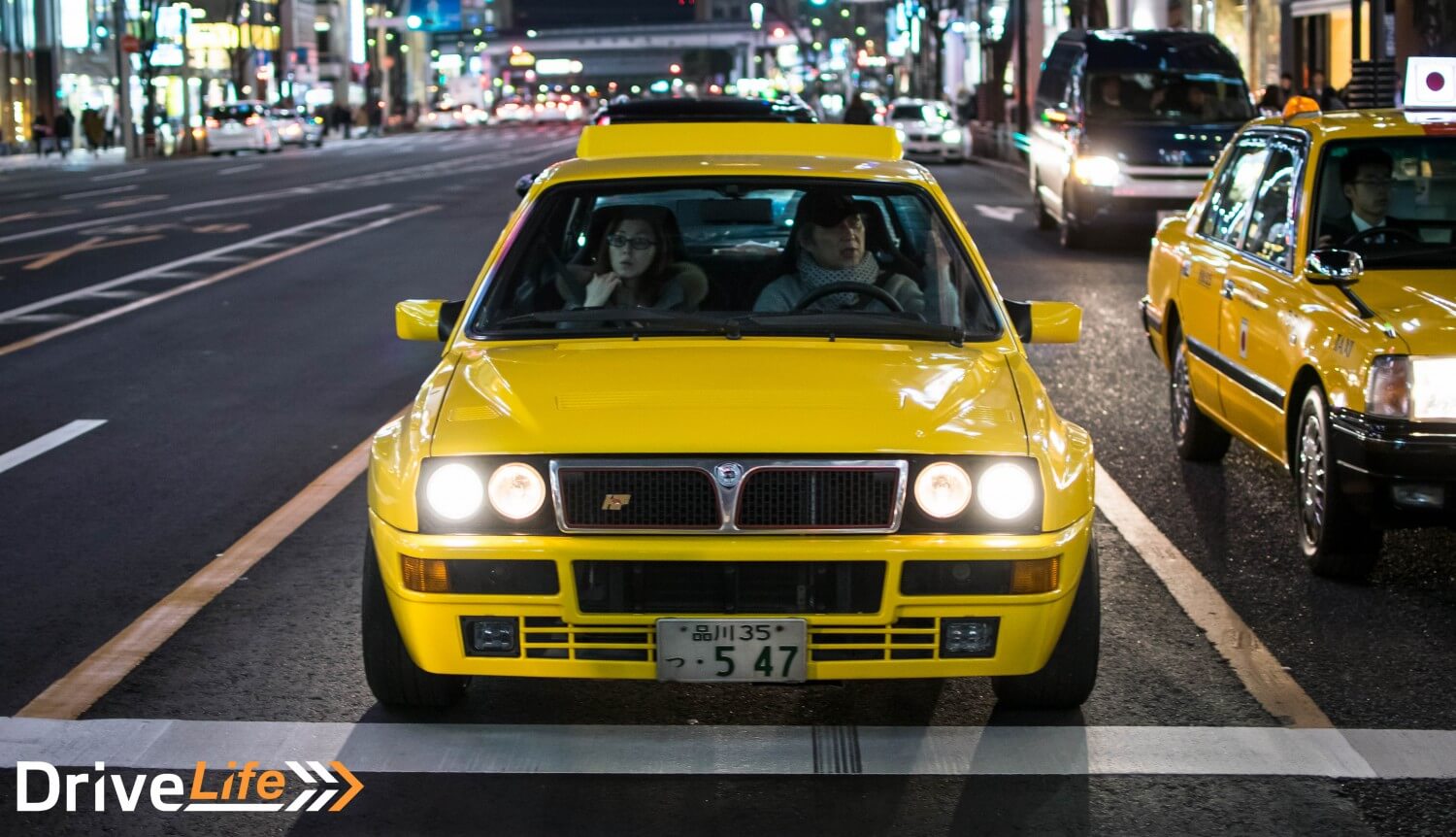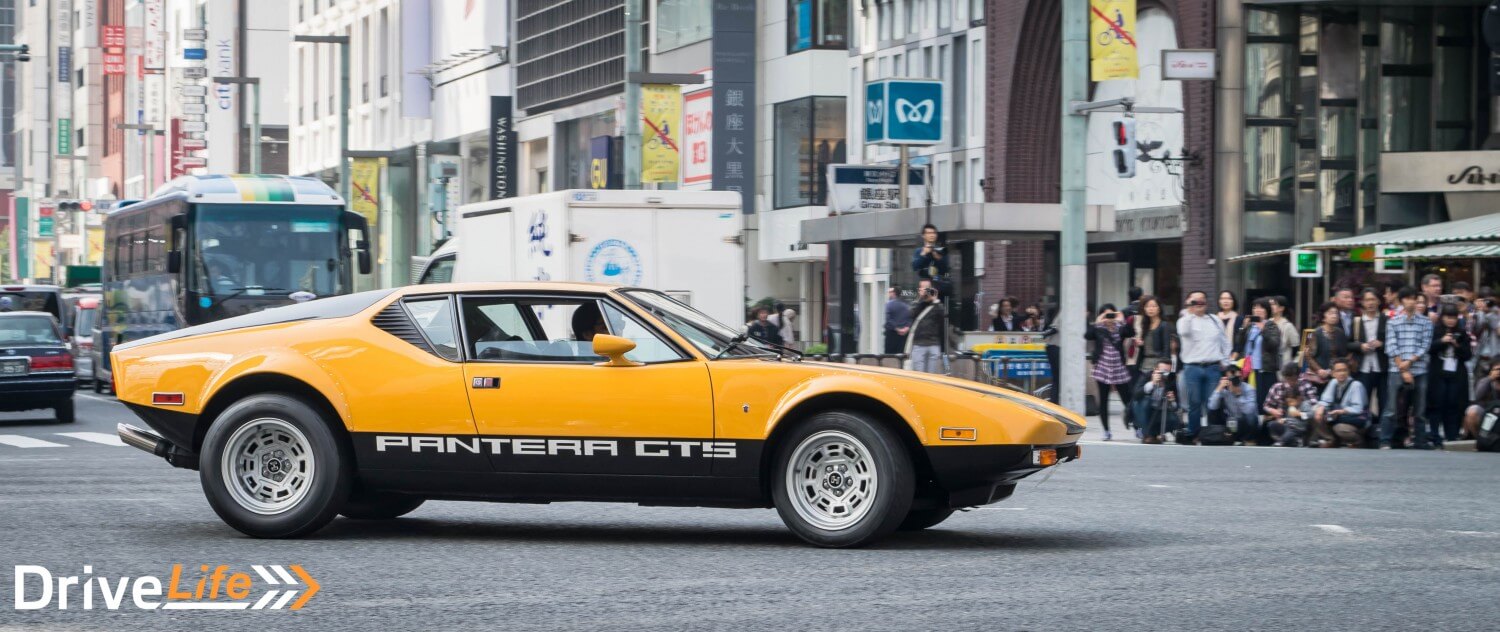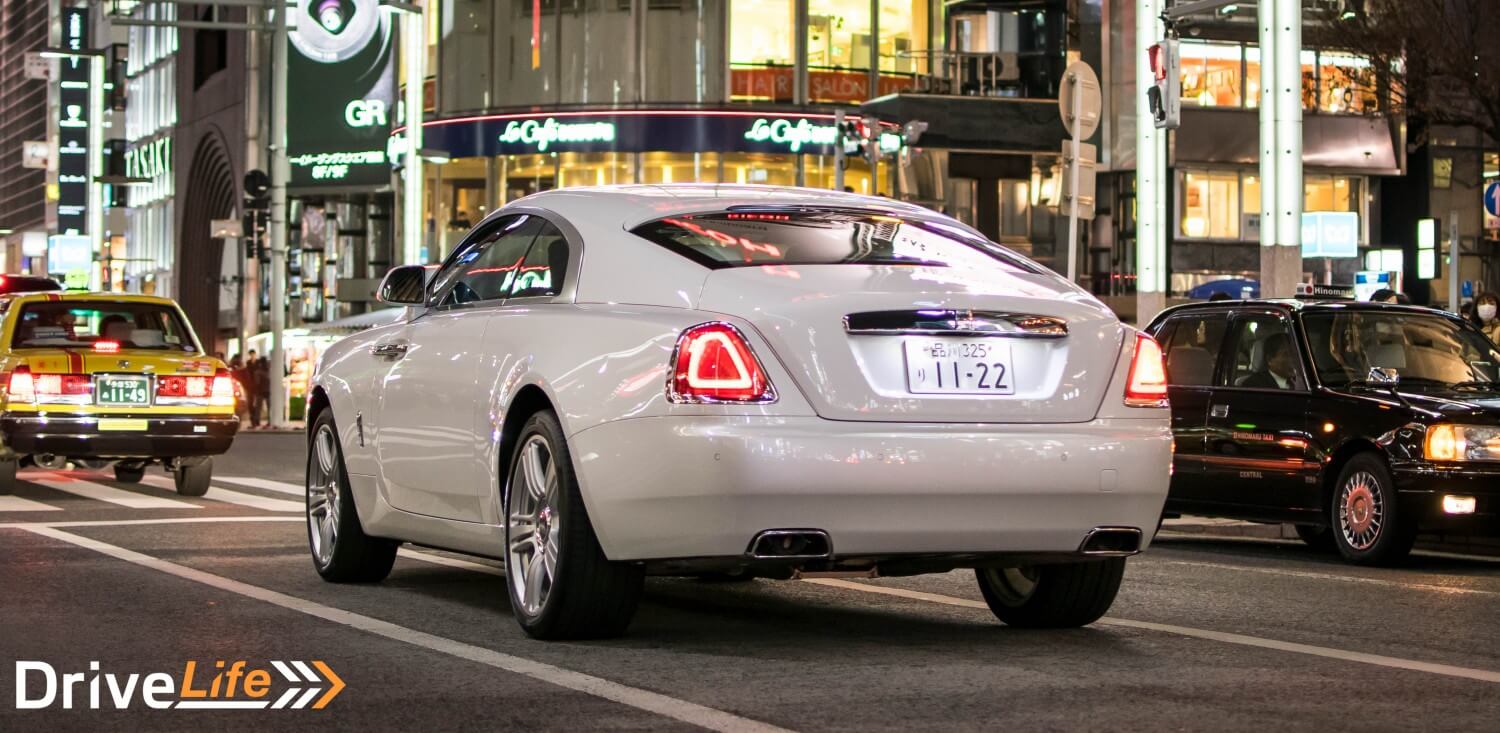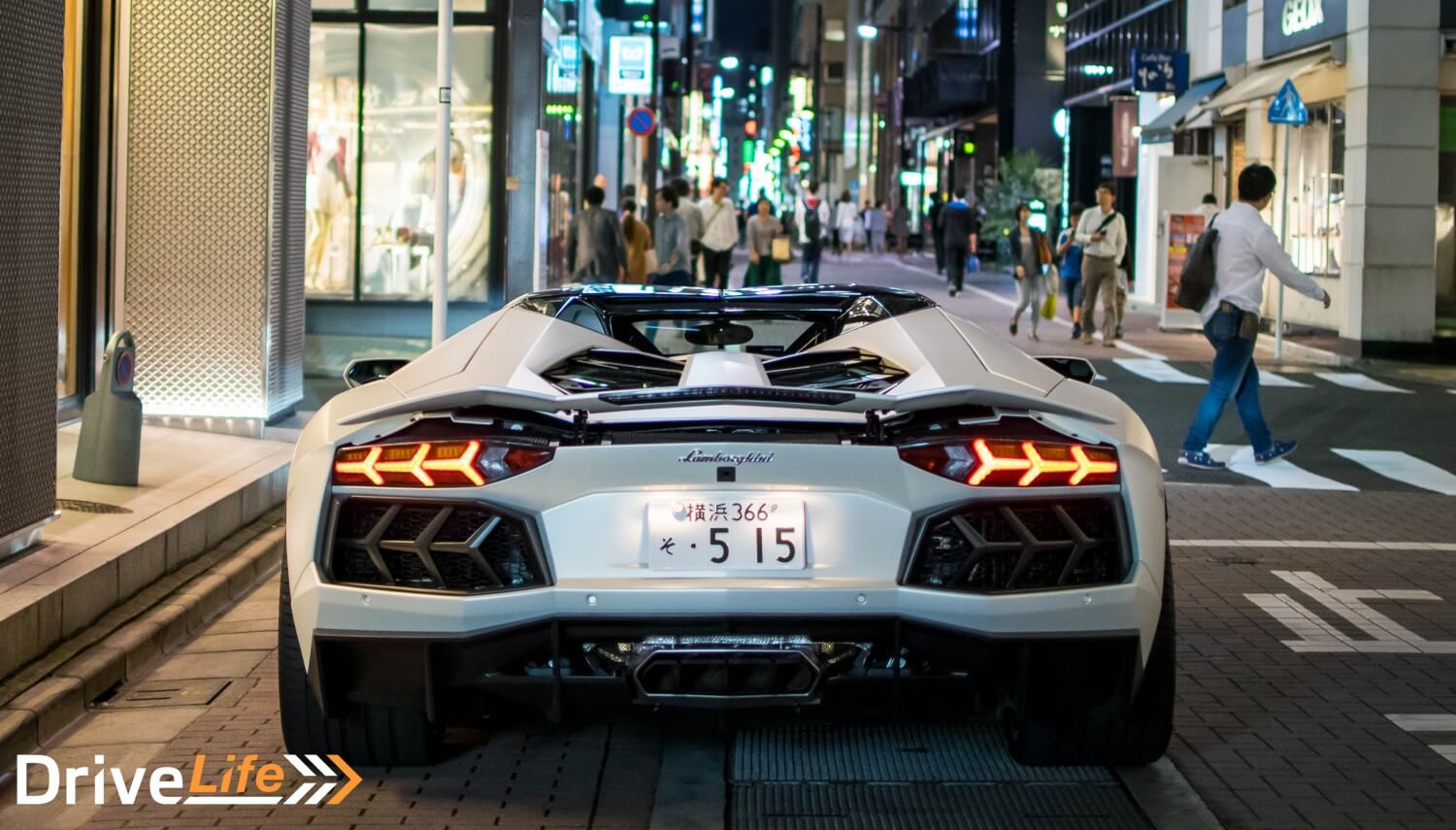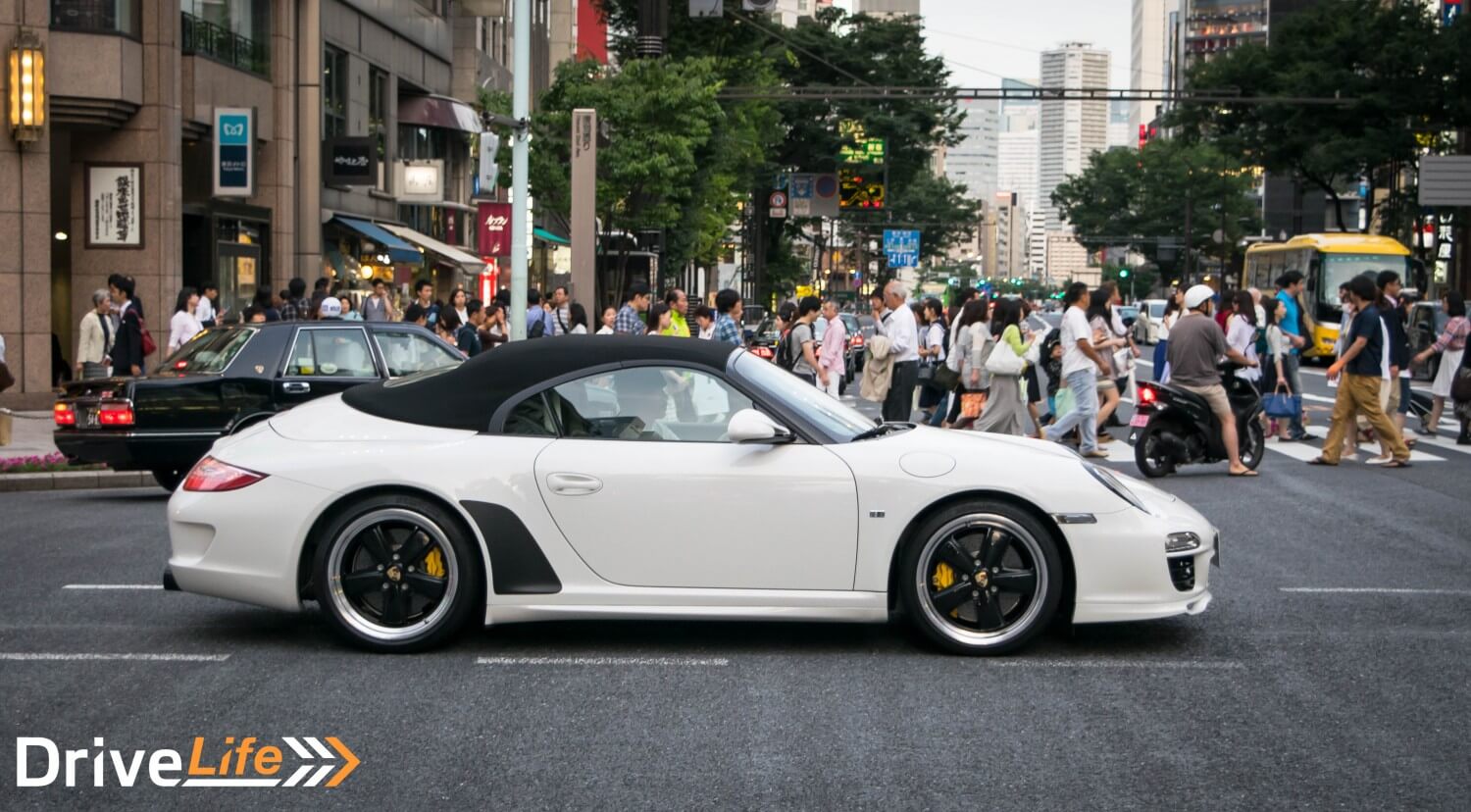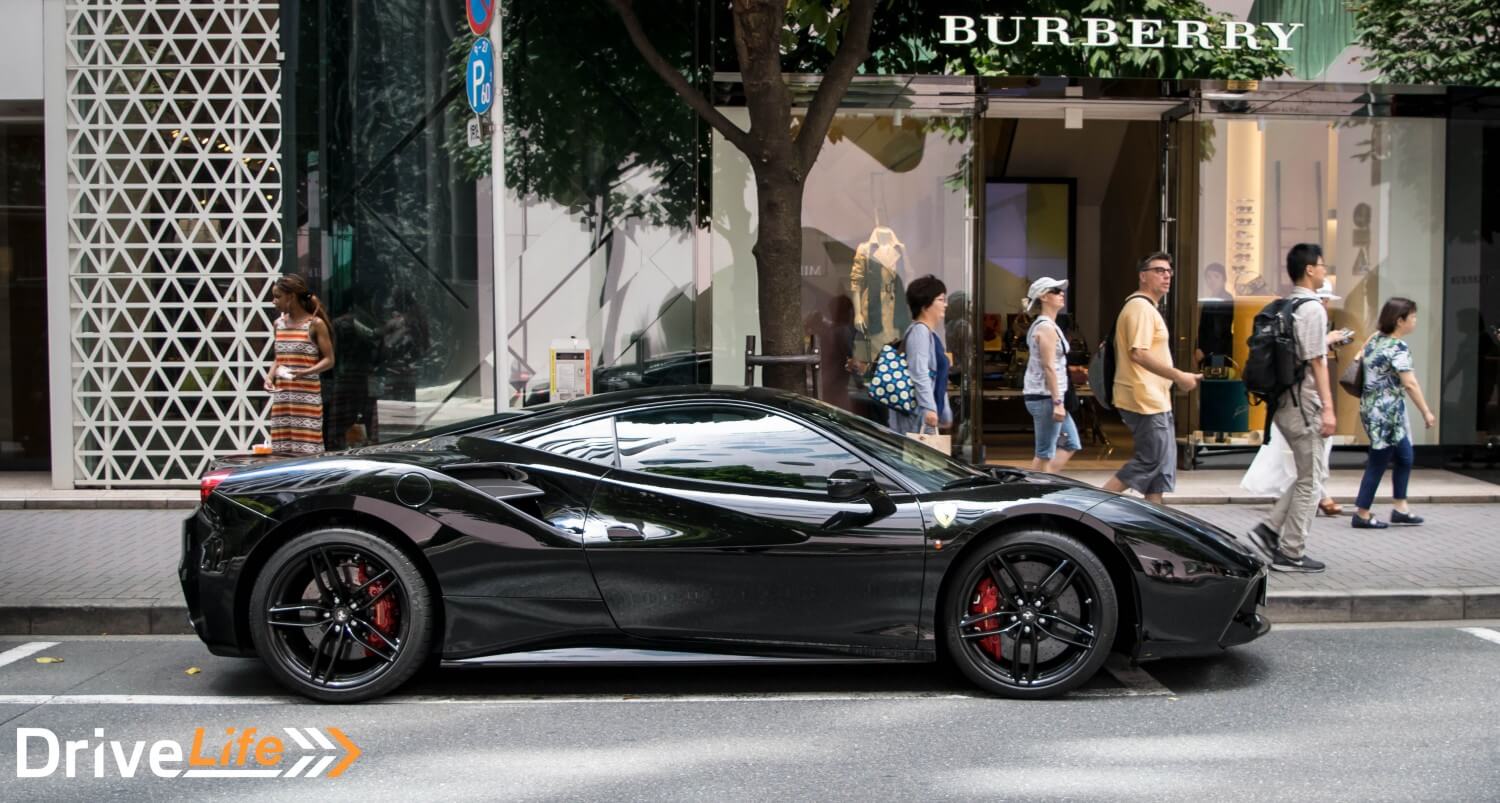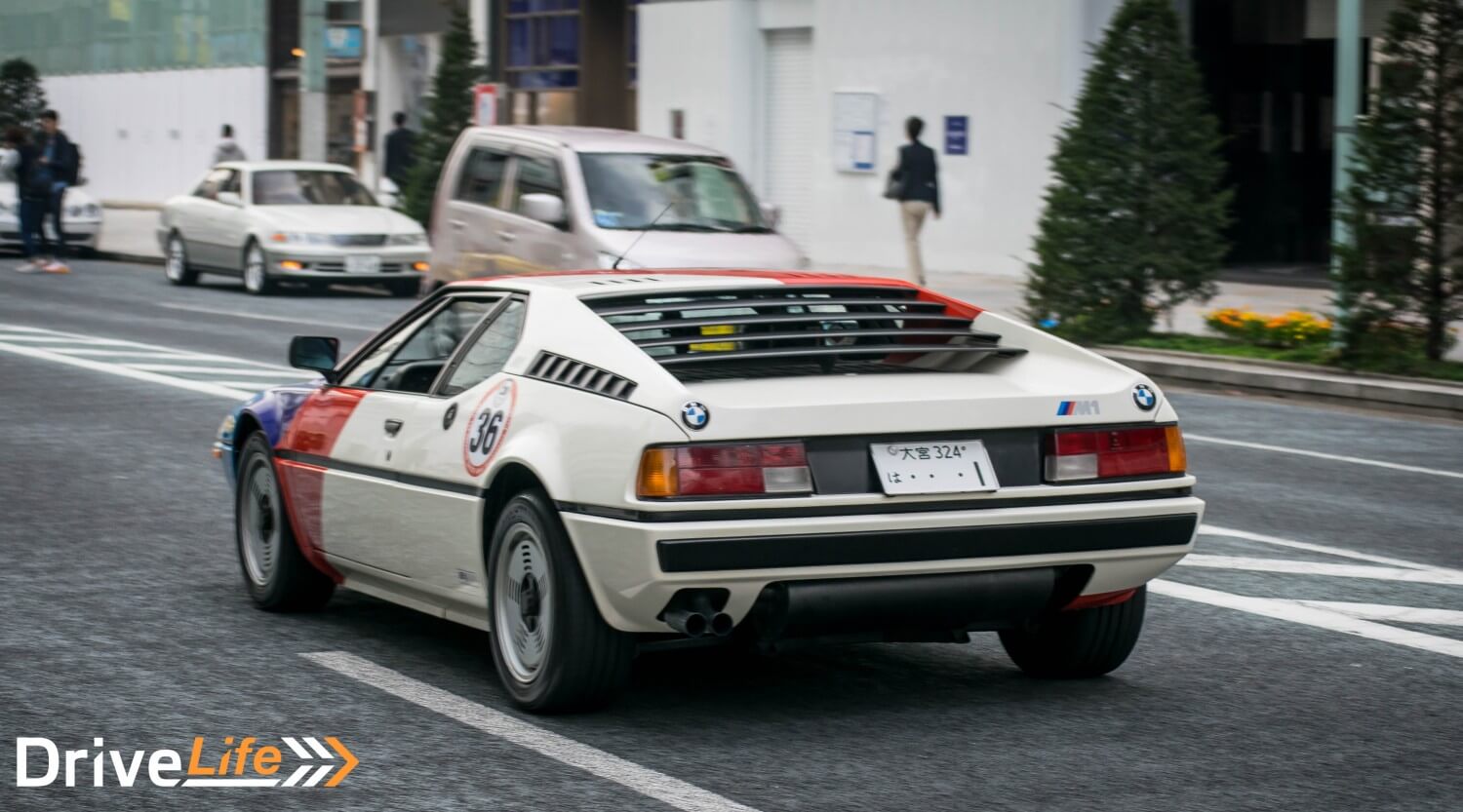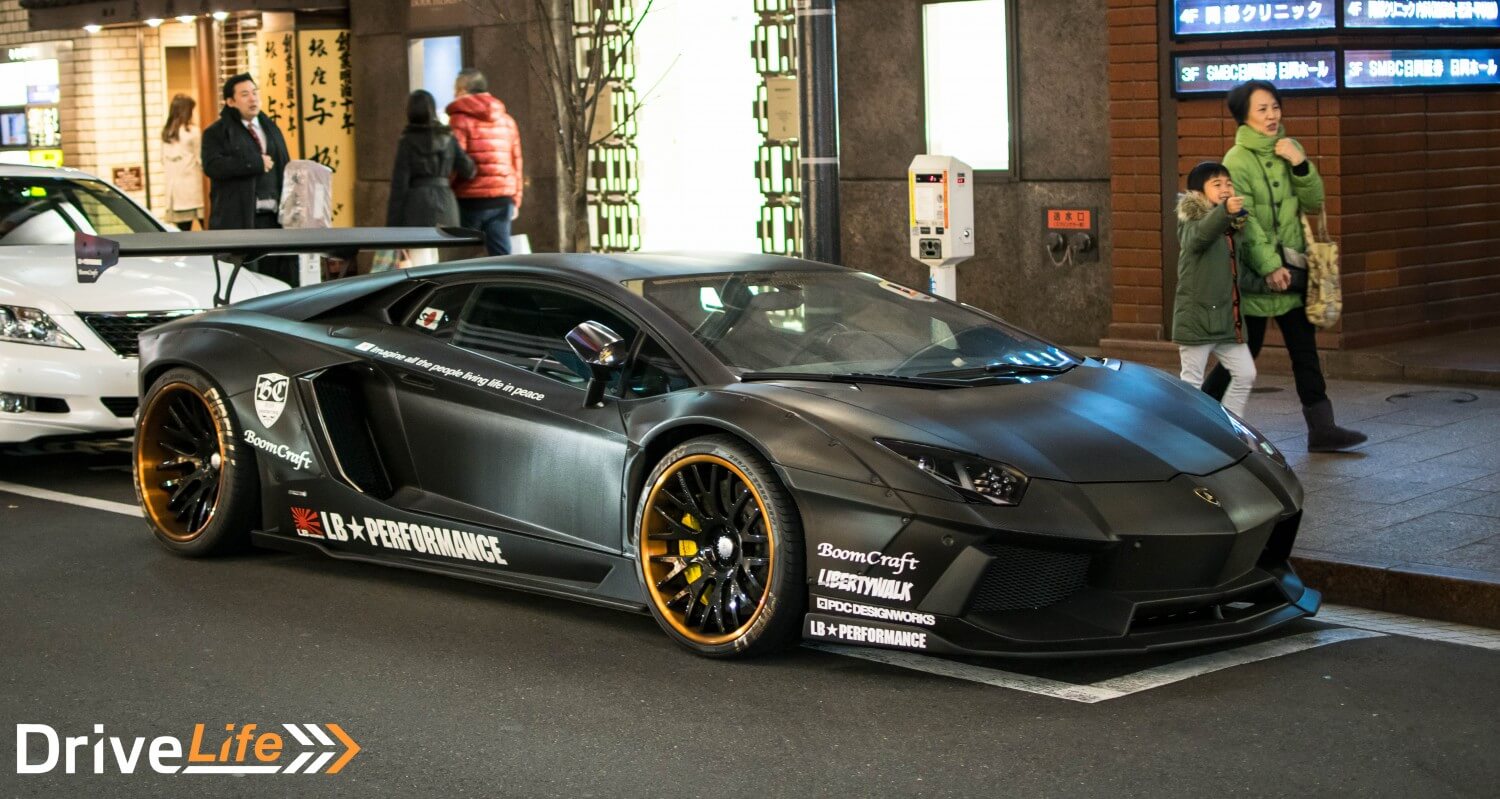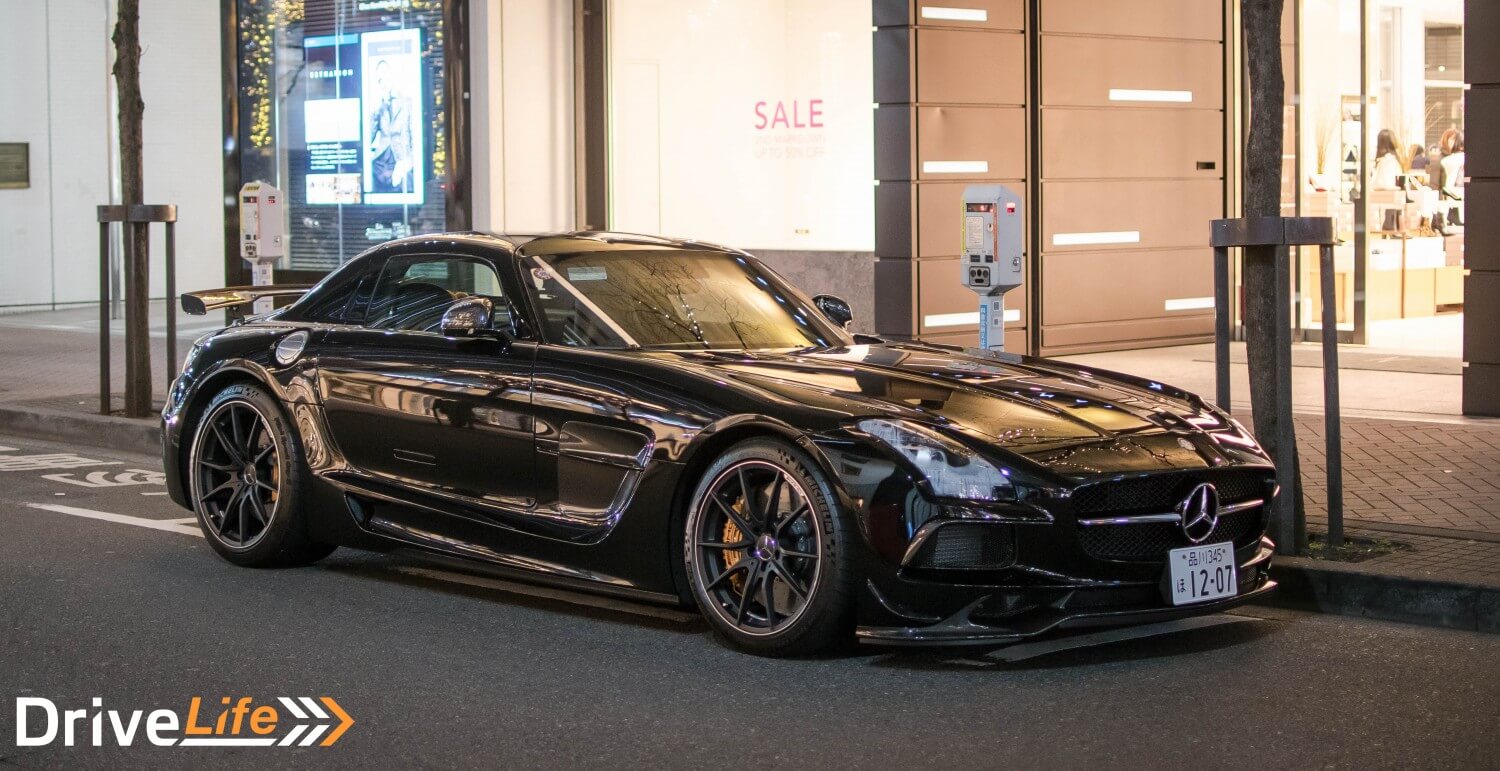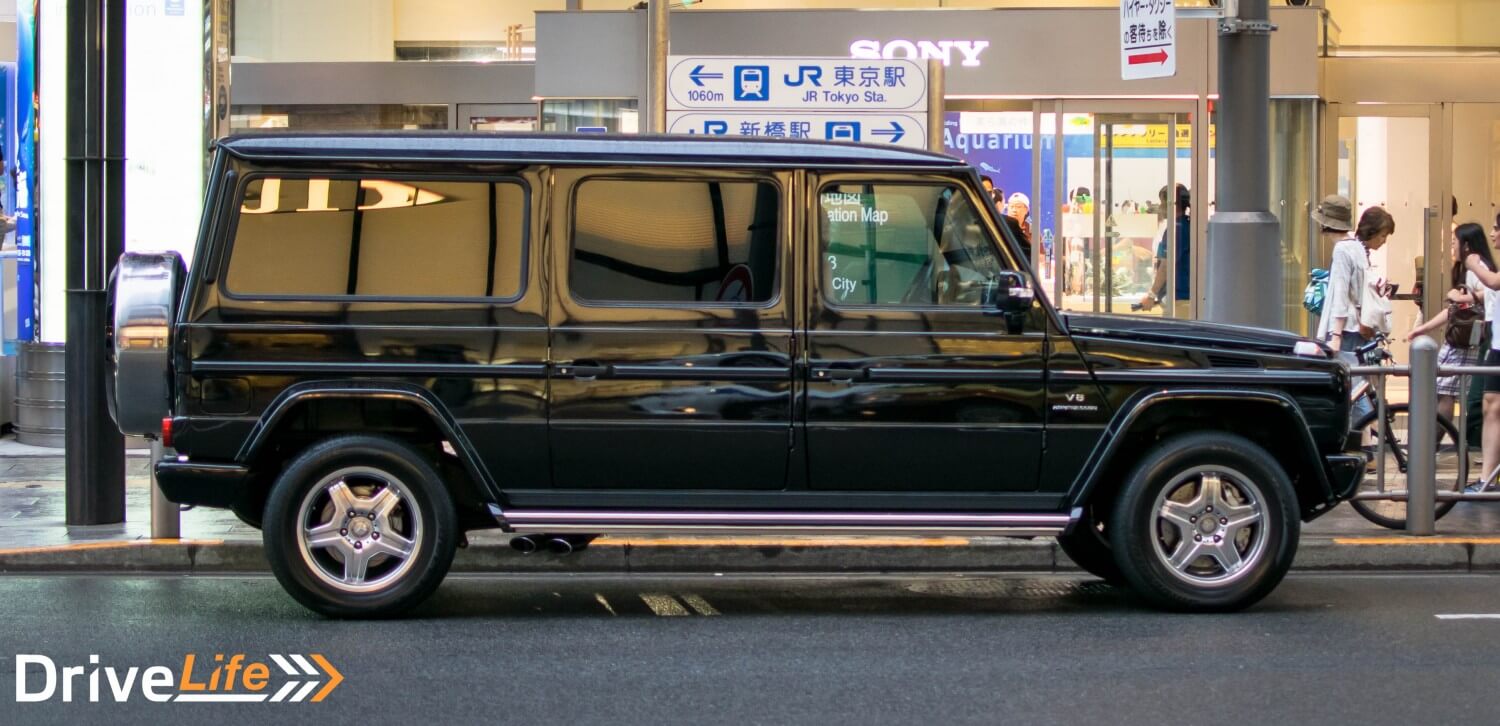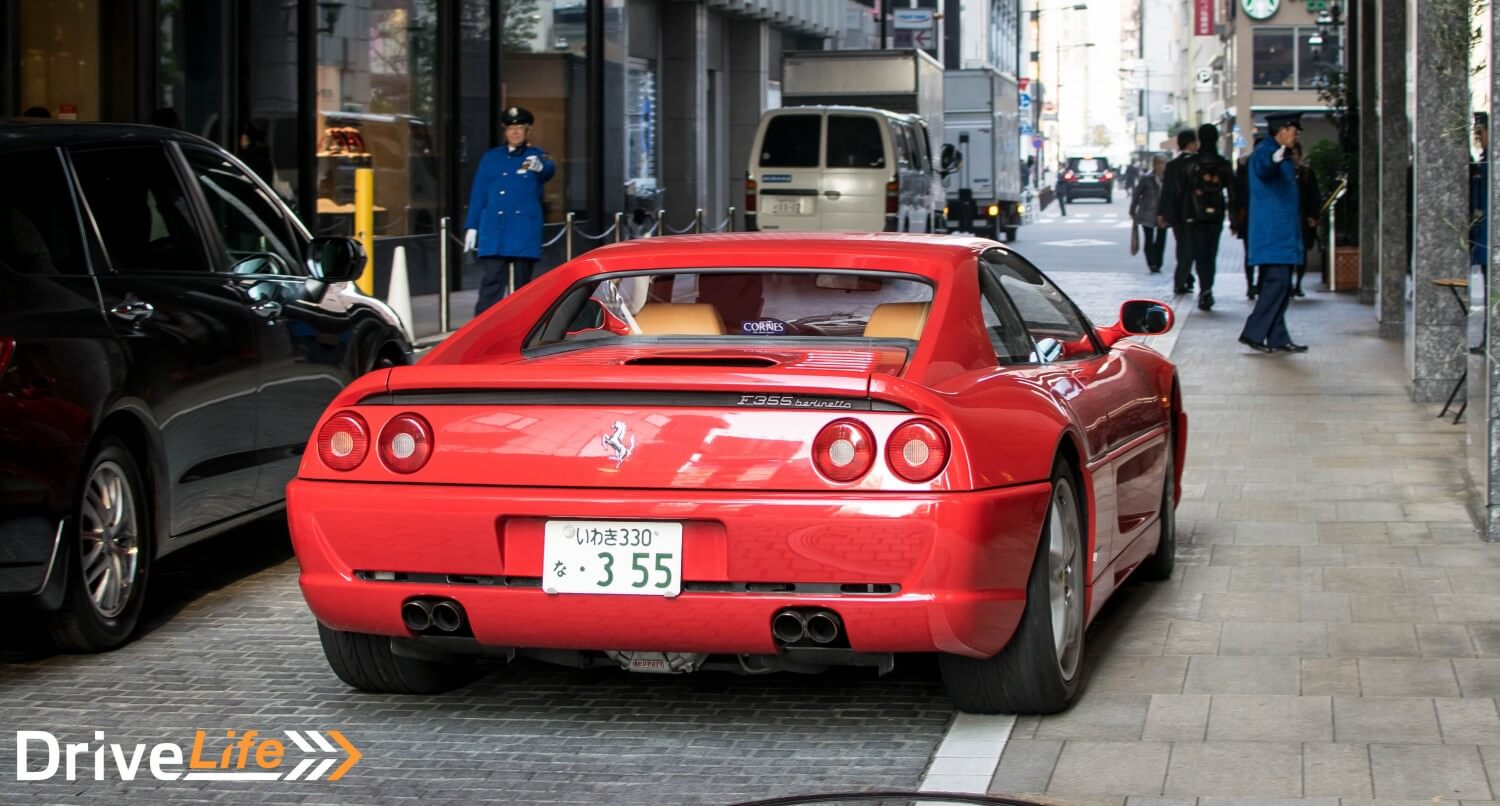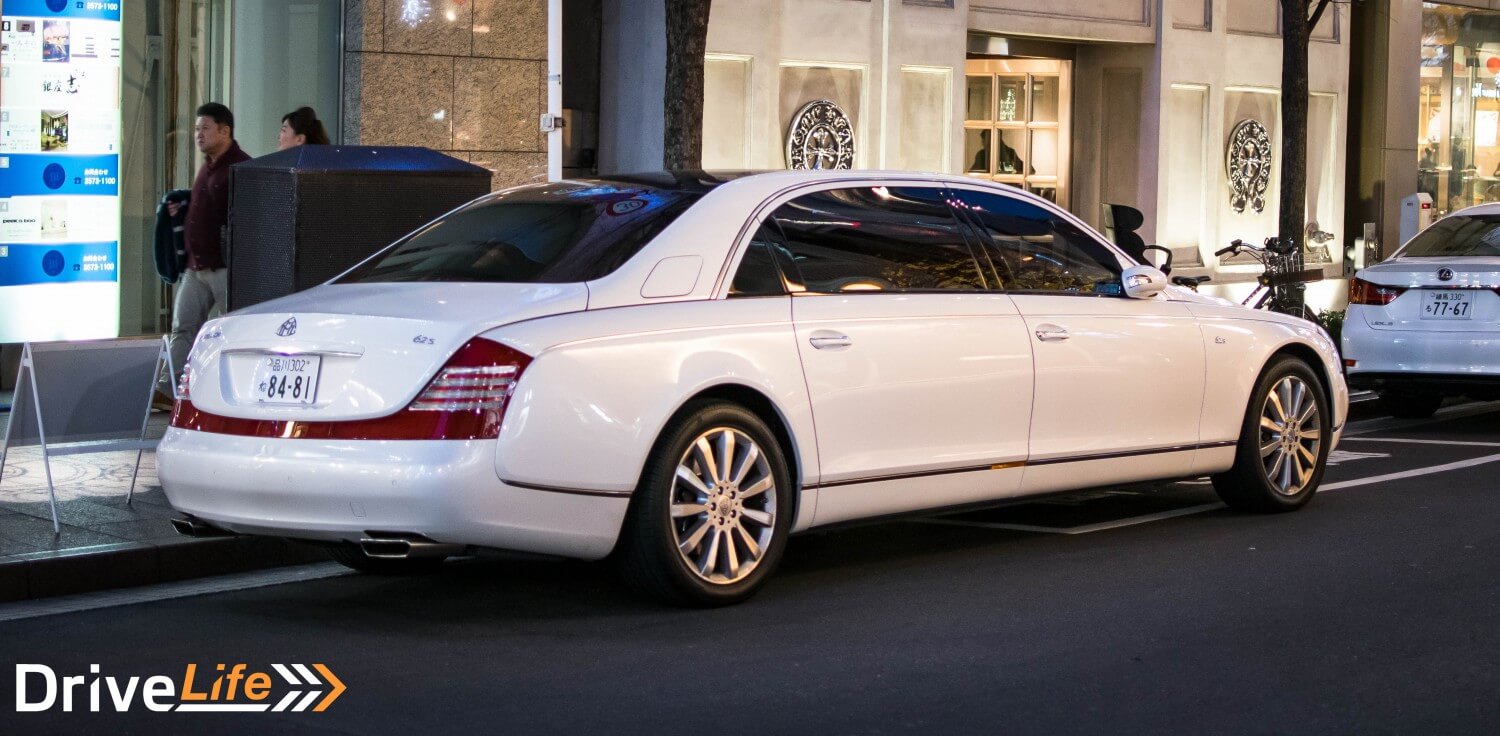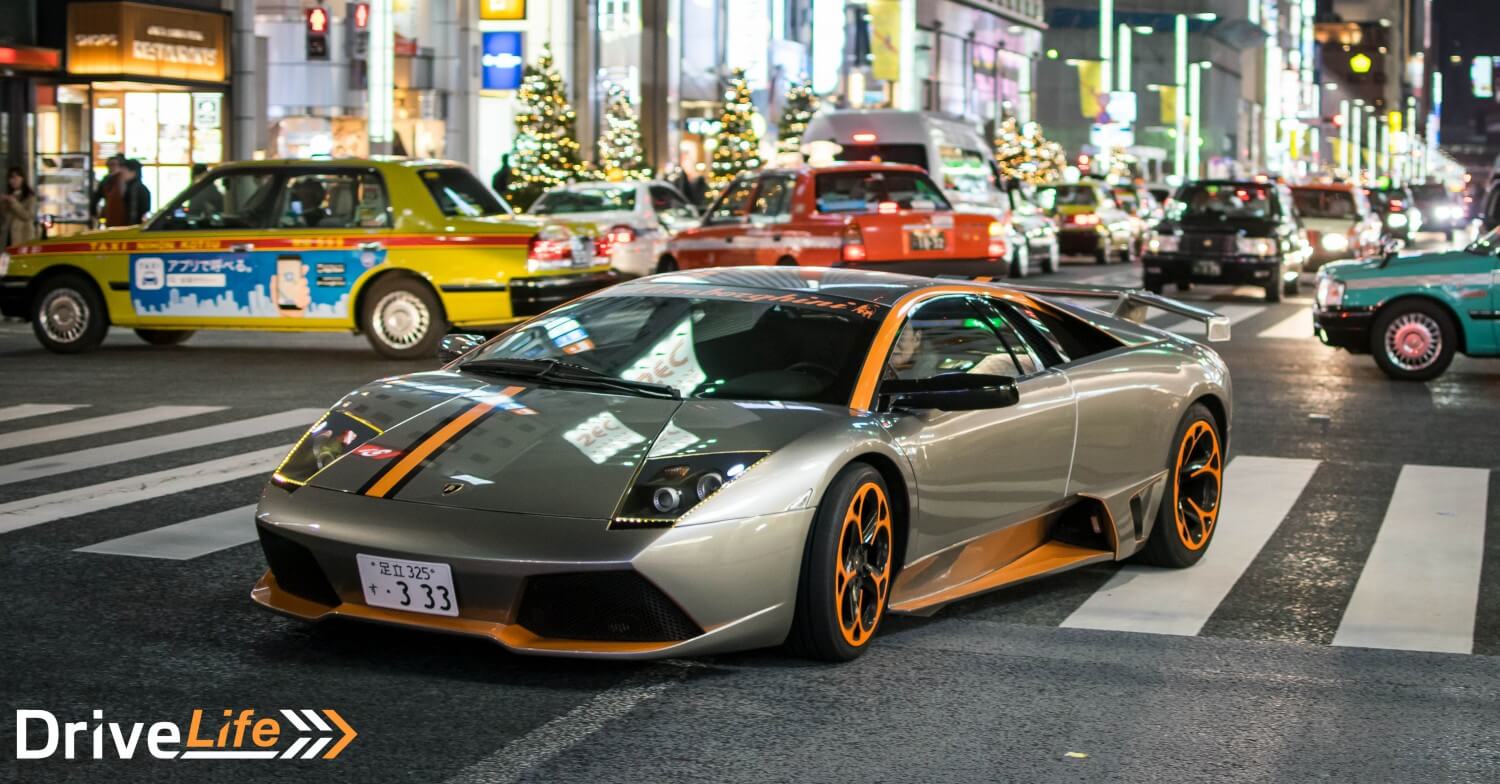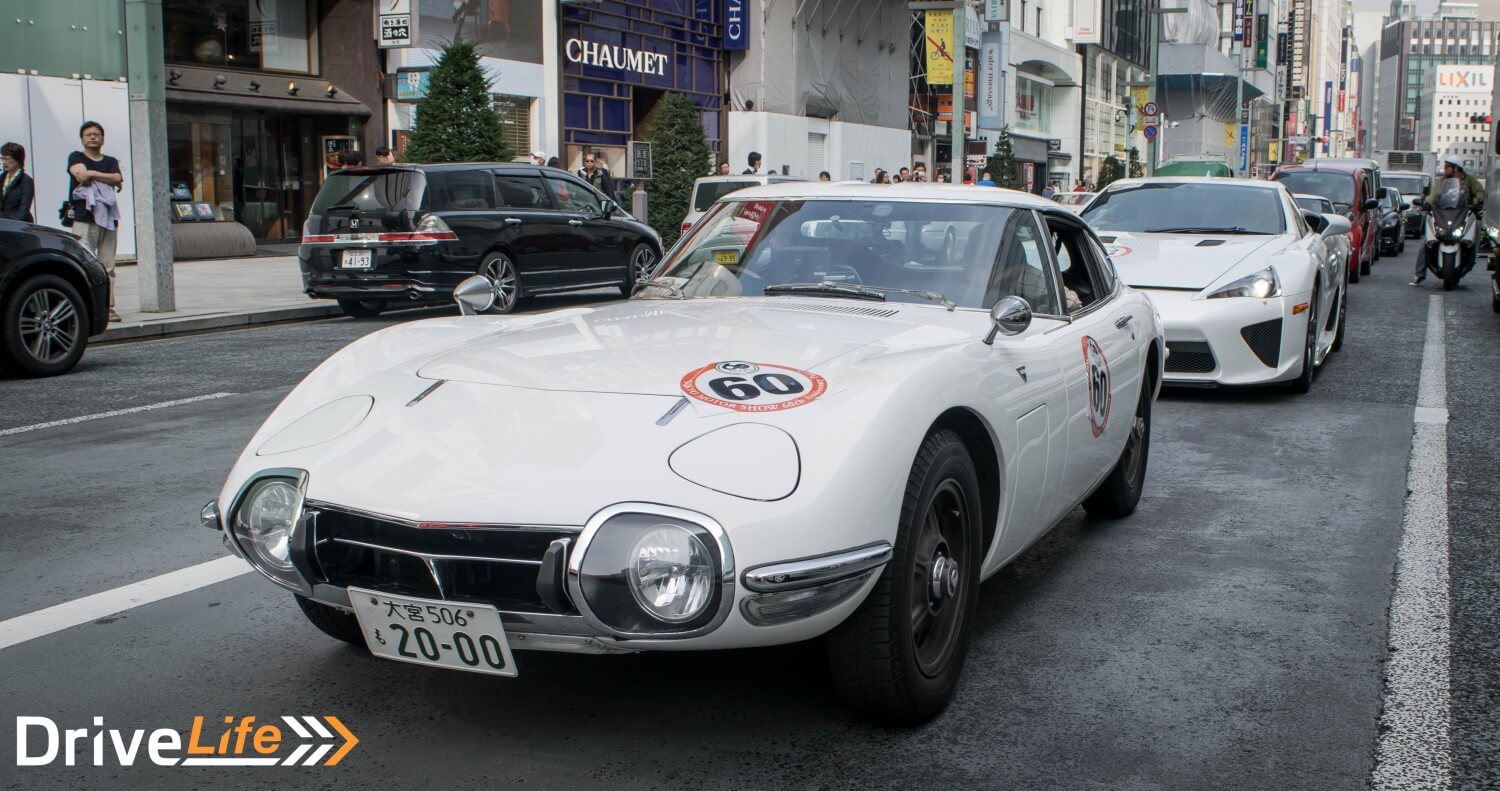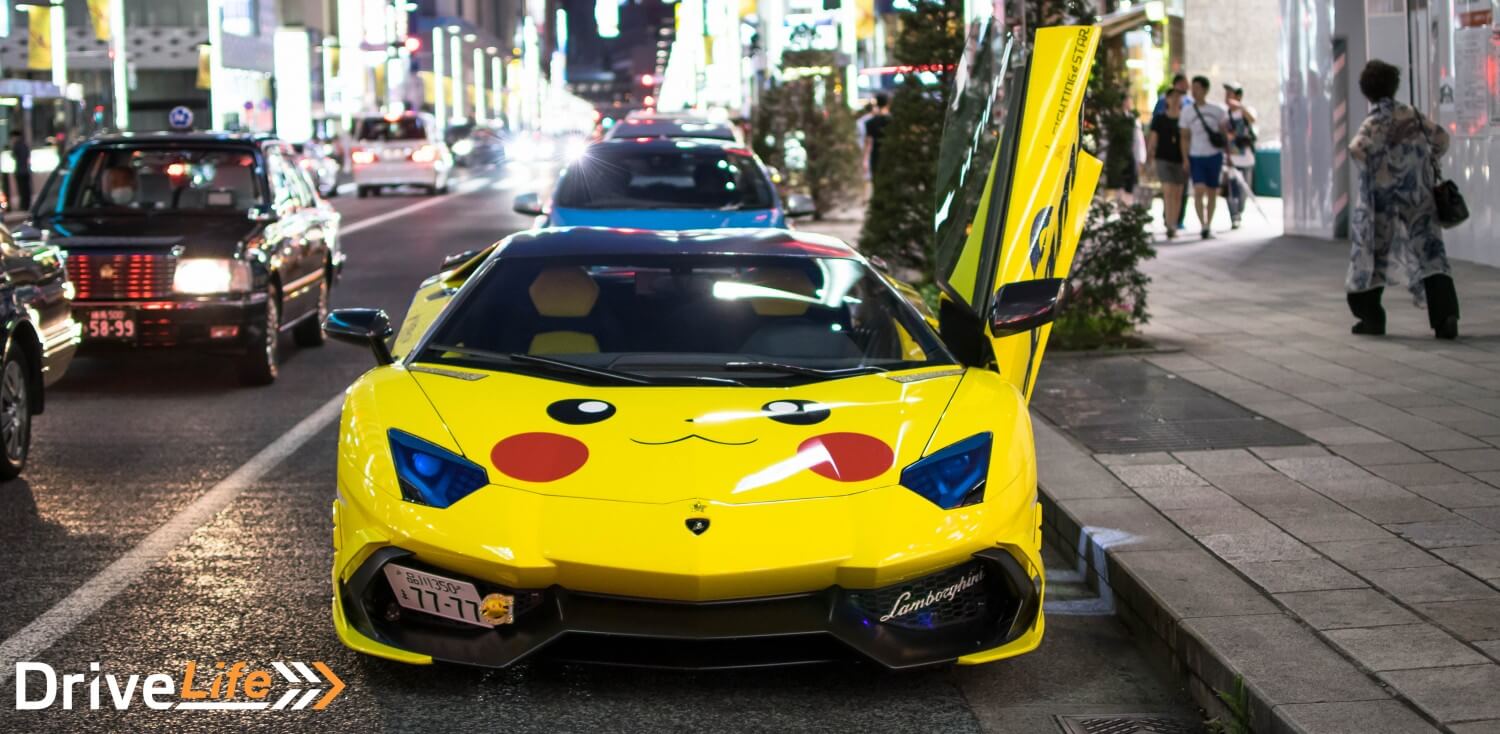The third place we’ll look at for car spotting locations in Tokyo is slightly different to the previous two, Roppongi Hills and Aoyama R246. Whereas those were were very specific, in the case of Roppongi Hills it’s literally just one intersection, Ginza covers a bit more ground.
The rule of thumb in Tokyo and I suppose in every other large city around the world, the fancier the location the fancier the cars are. High-end brand shops attract equally high end brand cars. So if you like having Versace and Louis Vuitton shops in the background of your photos, Ginza is the place to go.
Where Roppongi, and to an extent Aoyama, are residential areas of choice for many wealthy supercar owners in Tokyo, Ginza is by no means a residential area. It’s an area known for its luxury shopping, Western influence, and media. A lot of magazines, newspapers, and advertising agencies have offices in Ginza. It’s also next door to Marunouchi and Nihombashi, Tokyo’s two busiest business districts.
So there’s a lot of money around Ginza. It shows with the shops and department stores on the main road. When people ask me what’s there to do in Ginza (apart from car spotting of course) it’s shopping. During peak season (read summer), Ginza is overrun with tour buses full of tourists wanting to take full advantage of the tax-free shopping.
But that’s good for us because the more people that are around Ginza means more showing off opportunities for the many supercar owners in Tokyo. Even since the beginnings of the Ginza district in the early 20th Century, it was a place where people sporting the latest trends would show off.
Ginza was also a centre for all things new and Western in Tokyo. It was the location of the first McDonald’s in Japan and was also the location the first Starbucks in Japan. So it should come as no surprise that some of the West’s best and newest supercars can be found driving up and down the main Ginza road on most days.
However, unlike other places in Tokyo, supercars show up in Ginza during weekends and weekdays. That’s because of the various business districts around Ginza. Yes, even rich supercar owners have to drive to work once in a while.
But where Ginza differs is during the weekends. From midday to around 5pm-6pm they close the main road to all vehicles. It’s pretty cool as a pedestrian to be able walk on arguably one of the most famous roads in Tokyo, but at the same it’s frustrating if you were expecting to see supercars there on a Sunday afternoon.
What that means though is you simply have to explore Ginza’s backroads and alleys. Here you’ll find a rare thing in Tokyo; on street parking. Whoever designed Ginza’s roads was a very straight minded thinker, literally. Each road is a one way straight. It’s hard to get lost because you simply pick a road to walk down on and then once you’ve reached the end simply to go to the road parallel to it.
Speaking of parallel, having the cars parked parallel on the side of the road means plenty of time to take photos. Hell, you can set up a tripod and do a full on shoot. No need to worry about missing it or chasing it down the road. Though that can still happen in Ginza.
You never know what cars will show up in Ginza, either on the main road or in the backroads. There have also been instances where Ginza was empty or there weren’t any supercars at all. Of course there have also been days/nights where there’s a supercar ever 50 meters.
In terms of what sort of cars to expect in Ginza, be prepared for a whole variety of things. From classics to the latest supercars, you’ll be sure to see somethings there and a few surprises too. Compared to Aoyama and Roppongi, you won’t see often see hypercars such as Koenigseggs, Paganis, or Bugatti’s (who knows, you might get lucky), but you’ll be sure to get a variety of supercars. If luxo-barges are your thing, Ginza on weekday nights are full of posh chauffeured sedans parked outside clubs and restaurants, usually with many drunk businessmen.
I haven’t spent enough time in Ginza during the day but at night Ginza transforms. It’s one of the places in Tokyo where the backdrop is acceptable. It’s a lovely area and the atmosphere is different to other parts of Tokyo.
The best thing about Ginza is the accessibility of it. Being a popular tourist destination you can pretty much take the subway to Ginza from anywhere in Tokyo. If you’ve spent a day spotting in Roppongi or Aoyama, ending the day with a bit night spotting in Ginza is recommended.
How to get there: Ginza Station
By train: Tokyo Metro Ginza Line (From Ueno, Shibuya, Aoyama), Tokyo Metro Hibiya Line (From Roppongi, Ueno), Tokyo Metro Marunouchi Line (From Shinjuku, Ikebukuro, Tokyo Station).


